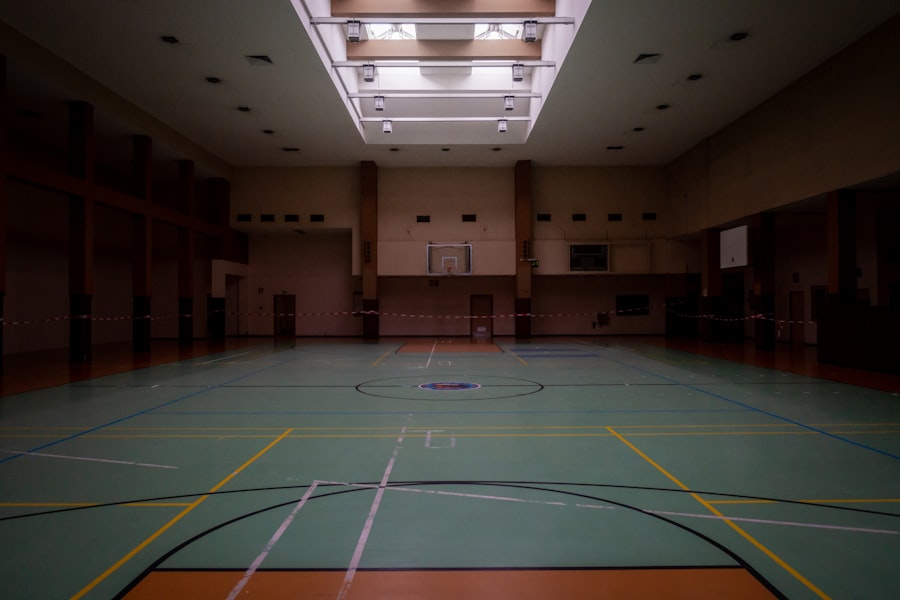Download links
How to install The Science of Bouncing Ball: A Fascinating Phenomenon APK?
1. Tap the downloaded The Science of Bouncing Ball: A Fascinating Phenomenon APK file.
2. Touch install.
3. Follow the steps on the screen.
Description
Bouncing is a fascinating phenomenon that can be understood through the lens of physics, particularly mechanics. When an object, such as a ball, is dropped from a height, it accelerates towards the ground due to the force of gravity. Upon impact with a surface, the ball deforms slightly, compressing as it absorbs some of the kinetic energy it has gained during its fall.
The energy stored during this compression is then converted back into kinetic energy as the ball returns to its original shape, propelling it upward. The height to which the ball bounces is influenced by several factors, including the material properties of both the ball and the surface it strikes.
For instance, a rubber ball will typically bounce higher than a tennis ball due to its greater elasticity. The physics behind this behavior can be described using Newton’s laws of motion, particularly the second law, which states that force equals mass times acceleration. When the ball hits the ground, the force exerted on it causes a rapid change in momentum, resulting in a bounce.
The efficiency of this energy transfer is what determines how high the ball will rebound.
Key Takeaways
- The physics of bouncing involves the transfer of kinetic energy to potential energy and back to kinetic energy.
- Elasticity plays a key role in determining how high a ball will bounce and how much energy is transferred during the bounce.
- Factors such as the material of the ball, surface it bounces on, and the angle of impact can affect the height of a bounce.
- Air pressure inside a ball can affect its bounce height, with higher pressure leading to a higher bounce.
- Different surfaces can affect the bounce of a ball, with harder surfaces typically resulting in higher bounces.
Elasticity and Energy Transfer
Measuring Elasticity
This characteristic is quantified by the coefficient of restitution, which measures the ratio of the velocity of separation to the velocity of approach after a collision. A coefficient close to one indicates that most of the kinetic energy is retained, resulting in a higher bounce.
Energy Loss and Surface Impact
When a ball strikes a surface, some energy is inevitably lost due to factors such as heat generation and sound production. The degree of energy loss varies depending on both the material properties of the ball and the surface it impacts.
Impact on Ball Performance
For example, when a basketball hits a wooden floor, it may lose less energy compared to when it strikes a carpeted surface. This difference in energy transfer efficiency can significantly affect the bounce height and overall performance of the ball in various sports.
Factors Affecting Bounce Height

Several factors influence how high a ball will bounce after being dropped or thrown. One primary factor is the initial height from which the ball is released; generally, the greater the height, the more potential energy is converted into kinetic energy upon impact. However, this relationship is not linear due to energy losses during the collision.
The material composition of both the ball and the surface also plays a significant role; for instance, a hard surface like concrete will yield a different bounce height compared to a softer surface like grass. Temperature can also affect bounce height. As temperatures rise, materials like rubber become more pliable and elastic, allowing them to store and release energy more efficiently.
Conversely, colder temperatures can make materials stiffer and less elastic, leading to lower bounce heights. Additionally, the size and shape of the ball can influence its aerodynamics and how it interacts with air resistance during its ascent and descent. A larger ball may experience more drag than a smaller one, potentially reducing its bounce height.
The Role of Air Pressure
| Aspect | Measurement |
|---|---|
| Air Pressure at Sea Level | 1013.25 millibars |
| Effects on Weather | High pressure brings fair weather, low pressure brings stormy weather |
| Altitude and Air Pressure | Air pressure decreases with increasing altitude |
Air pressure plays an essential role in determining how well a ball bounces. A ball that is properly inflated will have a higher internal air pressure, which contributes to its overall elasticity. When such a ball strikes a surface, it deforms less than an under-inflated ball would, allowing for more efficient energy transfer during impact.
This principle is particularly evident in sports like basketball and soccer, where maintaining optimal air pressure in balls is crucial for performance. Moreover, air pressure affects not only the bounce height but also the stability and control of the ball during play. For example, in soccer, an under-inflated ball may not travel as far or as accurately when kicked compared to one that is inflated to the recommended pressure.
Additionally, variations in altitude can influence air pressure; at higher altitudes where air pressure is lower, balls may behave differently than they do at sea level. This can have implications for athletes who train or compete in varying environmental conditions.
Bouncing on Different Surfaces
The surface on which a ball bounces significantly affects its behavior upon impact. Hard surfaces like concrete or hardwood floors provide minimal energy absorption, allowing for higher bounce heights due to efficient energy transfer. In contrast, softer surfaces such as grass or sand absorb more energy upon impact, resulting in lower bounce heights.
This difference can be observed in various sports; for instance, basketballs are designed to perform optimally on wooden courts while tennis balls are engineered for play on grass or clay courts. The texture of a surface also plays a role in how a ball bounces.
In contrast, smooth surfaces allow for less friction and can lead to faster rebounds. Additionally, surfaces that are uneven or have varying degrees of hardness can create unpredictable bouncing behavior, which can be both challenging and exciting in sports contexts.
The Mathematics of Bouncing

The mathematics behind bouncing involves several principles from physics and calculus that help quantify how objects behave during collisions. One key equation used in this context is derived from conservation of energy principles: potential energy (PE) at height \( h \) is given by \( PE = mgh \), where \( m \) is mass, \( g \) is acceleration due to gravity, and \( h \) is height. When a ball bounces back up after hitting the ground, its maximum height can be calculated based on how much kinetic energy was retained after impact.
The coefficient of restitution (e) also plays an important role in these calculations. It can be expressed mathematically as \( e = \frac{v_f}{v_i} \), where \( v_f \) is the final velocity after bouncing and \( v_i \) is the initial velocity before impact. This coefficient helps predict how high a ball will bounce relative to its drop height.
For example, if a basketball has an e value of 0.75 and is dropped from 2 meters, one can calculate that it will rebound to approximately 1.5 meters under ideal conditions.
Applications in Sports and Engineering
The principles governing bouncing have significant applications in both sports and engineering fields. In sports like basketball and volleyball, understanding how balls bounce can inform design choices for equipment and playing surfaces. For instance, basketballs are designed with specific materials and internal pressures to optimize their bounce characteristics on wooden courts.
Similarly, volleyballs are engineered to maintain their shape and elasticity during play to ensure consistent performance. In engineering contexts, knowledge about bouncing dynamics informs various applications such as shock absorbers in vehicles or protective gear for athletes. Engineers design these systems to minimize impact forces by controlling how energy is absorbed and dissipated during collisions.
For example, crumple zones in cars are designed to deform upon impact, absorbing energy and reducing injury risk for passengers by controlling how forces are transmitted through the vehicle structure.
Bouncing Ball Experiments for Kids
Engaging children with hands-on experiments related to bouncing balls can foster an understanding of physics concepts while making learning enjoyable. One simple experiment involves dropping different types of balls—such as a rubber ball, tennis ball, and ping pong ball—from the same height onto various surfaces like concrete and carpet. Children can measure and compare how high each ball bounces on different surfaces while discussing why certain materials perform better than others.
Another fun experiment involves varying air pressure within a single type of ball using a pump or deflator. Kids can observe how inflating or deflating affects bounce height by conducting controlled drops from a consistent height. This activity not only teaches them about elasticity but also introduces them to concepts like air pressure and material science in an interactive way.
By encouraging curiosity through experimentation, children can develop foundational knowledge about physics while enjoying themselves in the process.
FAQs
What is a bouncing ball?
A bouncing ball is a small, round object that is designed to rebound off of surfaces when it is dropped or thrown.
What is the science behind a bouncing ball?
The science behind a bouncing ball involves the transfer of kinetic energy from the ball to the surface it bounces off of, and then back to the ball. This process is governed by the laws of physics, including the conservation of energy and momentum.
What materials are bouncing balls typically made of?
Bouncing balls are typically made of rubber or similar elastic materials that allow them to deform upon impact and then return to their original shape, enabling them to bounce.
What are some common uses of bouncing balls?
Bouncing balls are commonly used as toys, in sports such as basketball and tennis, and in various scientific experiments and demonstrations to illustrate principles of physics.
How high can a bouncing ball bounce?
The height to which a bouncing ball can rebound depends on factors such as the material and construction of the ball, the surface it bounces off of, and the initial force with which it is dropped or thrown.





